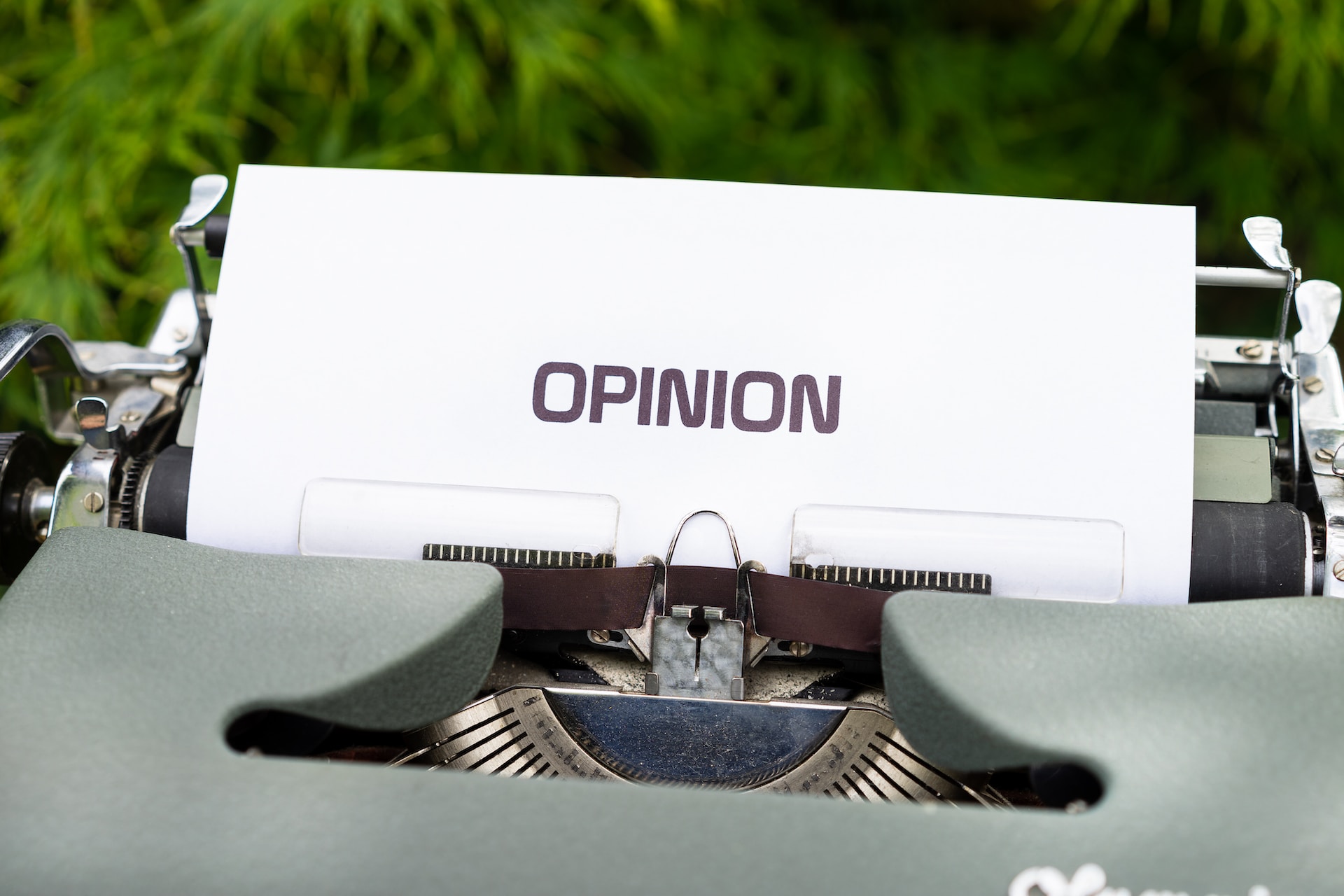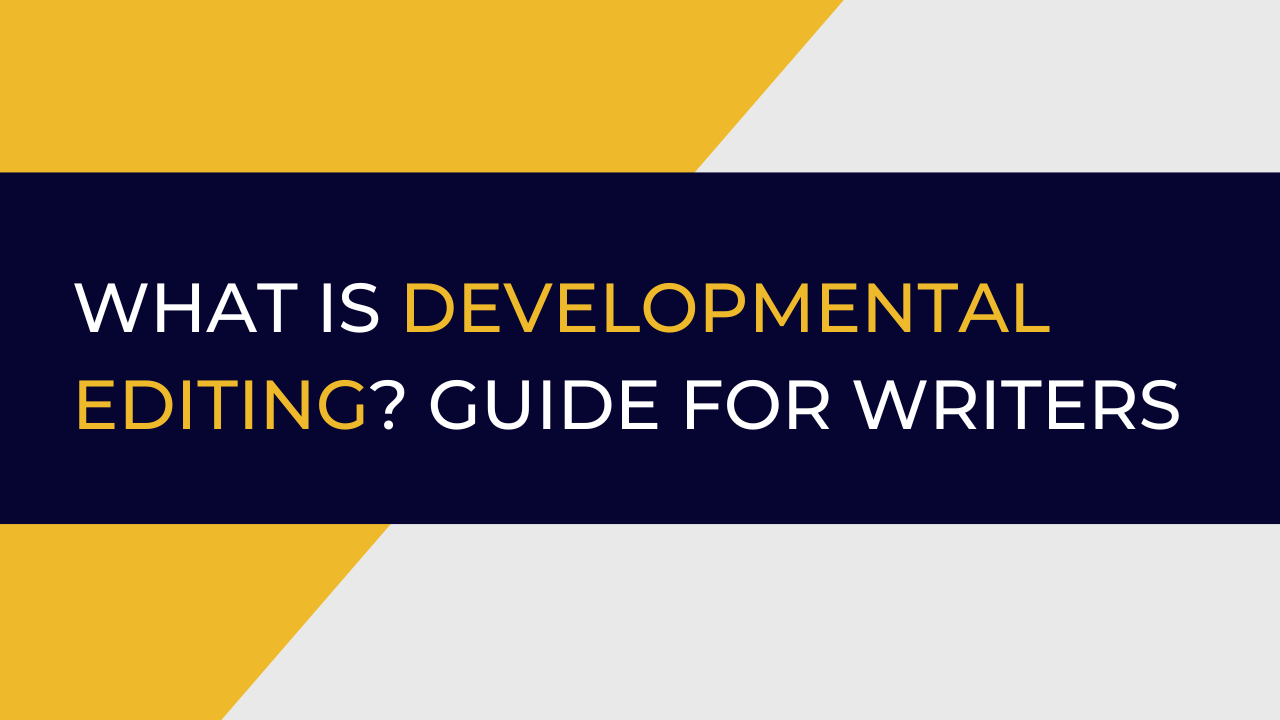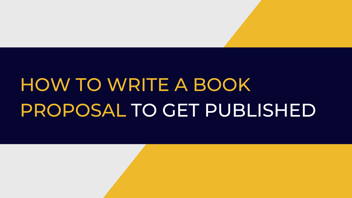What Is Developmental Editing? A Comprehensive Guide for Writers
You're embarking on a writing journey, and you've heard the term "developmental editing" tossed around. But what is developmental editing, exactly?
I first learned about developmental editing after I wrote my first book. Now that I had a solid first draft, I needed to improve it at a high level and make the narrative flow as best as possible. This led me to work with a developmental editor and do a lot of developmental editing myself.
This comprehensive guide will demystify the concept of developmental editing for you, breaking down its crucial role in the book writing and publishing process.
Developmental editing, often interchanged with substantive editing, dives deep into the heart of your manuscript. It's a critical step in the publishing process. It's where an editor rolls up their sleeves to enhance your literary fiction or story's structure, pacing, and content.
Unlike a quick spell check, this phase shapes your writing into the best narrative it can be.
As you explore this comprehensive guide, you'll gain insights into how developmental editing can transform your rough draft into a polished gem.
Table of Contents
- What Is Developmental Editing?
- 5 Major Types of Developmental Edits
- The Goal of the Developmental Editing Process
- What Kinds of Writing Need Developmental Editing?
- The Developmental Editing Process
- Developmental Editing vs Other Editing Stages
- Roles and Responsibilities of a Developmental Editor
- Working with a Developmental Editor
- Final Words on Developmental Editing
What Is Developmental Editing?
Developmental editors are like skilled builders. They reconstruct the story, fix the flaws, and ensure everything makes sense. This might include character development, chronology, description, and more.
Developmental editing is an absolute must. While it can be done by writers themselves, most writers will still need a developmental editor to give a second opinion.

Even the most talented authors might draft a story that's good but not quite there yet, often falling prey to common writing mistakes. These editors help writers polish their work, fix plot issues, enhance sentences, and ensure consistency.
They work closely with the author, forming a team dedicated to producing the best possible book.
5 Major Types of Edits
To better understand developmental editing, it's important to know the different types of editing.
First, the goal of editing is to enhance the quality and effectiveness of a manuscript and ensure it clearly communicates its intended message, story, or information.
But there are different types of editing, useful at different stages of the manuscript development.
Here are the 5 major types of editing:
-
Developmental Editing: This is the first deep dive into your manuscript, often beginning with an intensive brainstorming process. A developmental editor looks at the big picture, focusing on the overall organization and strength of your draft. They check the plot, themes, development of characters, and tension in your story. The goal is to make sure your story is well-constructed and engaging from start to finish.
-
Structural Editing: This type involves examining the structure of your story. Structural editors assess how your manuscript is put together and suggest changes to enhance its flow and impact. They consider your target audience, your writing goals, and how your story is presented to ensure it's the best it can be.
-
Line Editing: Also known as stylistic editing, line editing focuses on your prose from a style perspective. A line editor looks at your word choice, sentence structure, and overall flow. They provide feedback on how your writing sounds and offer suggestions to make your prose more effective and enjoyable to read.
-
Copy Editing: Unlike line editing, which delves into the nuances of word choice and style, copy editing focuses on the mechanics of your writing. A copy editor checks for grammatical errors, spelling mistakes, inconsistencies, and other technical issues. They ensure your manuscript is polished, coherent, and correctly formatted.
-
Proofreading: Think of proofreading as the final polish. This last stage of editing focuses on catching any remaining typos, misplaced punctuation, and formatting issues before your manuscript is published. Proofreaders make sure your final product is clean, professional, and ready for readers' eyes.
In this guide, however, we'll mainly focus on the developmental editing process and its role in crafting good writing that resonates with readers.
The Goal of the Developmental Editing Process
The goal of the developmental editing process is to ensure your writing is the best it can be.
When you've poured your heart and soul into a manuscript, a developmental editor steps in to bring a fresh, professional perspective. It covers much more than just grammar and punctuation; it encompasses the overall quality of your work.
Developmental editors conduct a deep manuscript critique, diving into your story or content to check if the structure is clear and if your writing meets the expectations of your target audience.

They focus on the development of characters, pacing, dialogue, tone, and even potential plot holes. This way, every element of your story or article works together seamlessly.
When does a developmental editor come into play?
Usually, right after your first or second draft.
It's a good idea to bring them on board early in the writing process. This way, you can address any major issues before moving on to the finer details.
What Kinds of Writing Need Developmental Editing?
Various kinds of writing benefit from developmental editing, as it helps enhance structure, content, and overall quality. Here are some types that typically need this level of editing:
-
Novels and Novellas: Fictional stories, especially long-form novels, and young adult fiction, often require manuscript evaluation to ensure the plot, character development, pacing, and dialogue are all engaging and coherent.
-
Non-Fiction Books: Whether it's a self-help book, memoir, history, or educational text, non-fiction works need developmental editing to maintain clear focus and organization and to ensure the content effectively reaches the right audience.
-
Short Stories: Even in shorter works, every critical feedback is useful for refining the narrative and ensuring the story has a strong impact.
-
Academic and Research Papers: These works benefit from developmental edits to ensure arguments are clear, well-structured, and supported by evidence.
-
Biographies and Autobiographies: Ensuring that the life story is compelling, well-paced, and engaging often requires the keen eye of a developmental editor.
-
Plays and Scripts: For theatrical works or screenplays, developmental editing helps to refine dialogue, structure scenes, and ensure the narrative flows logically and emotionally.
-
Children's and Young Adults' Books: These need to be engaging and appropriate for the age group, with a clear moral or message, which a developmental editor can help to hone.
-
Business and Technical Documents: Reports, proposals, and manuals may also need developmental editing to ensure they are clear, concise, and effectively communicate their message.
In each case, the goal is to improve the readability, structure, and engagement of the writing, ensuring it resonates with the target audience.
The Developmental Editing Process
The developmental editing process involves:
-
Assessing the manuscript's organization and flow for a cohesive structure.
-
Suggesting additions or removals to improve the clarity and impact of the content.
-
Analyzing and refining character arcs and motivations for depth and believability.
-
Ensuring the story unfolds at an appropriate and engaging pace.
-
Identifying and resolving any inconsistencies or holes in the plot.
-
Refining conversations to sound natural and effectively drives the narrative.
-
Ensuring the setting and descriptions vividly contribute to the story's atmosphere.
-
Offering comprehensive suggestions through an editorial letter for actionable improvements.
Fundamentals of Developmental Editing
The fundamentals of developmental editing form the bedrock of transforming a manuscript into a compelling, coherent story. At its core, developmental editing focuses on the 'big picture' elements of your writing.

It's not about the commas and typos; it's about structure, character development, plot, and pacing.
When a developmental editor embarks on the editing process, they look at your work as a whole. They assess how your story flows, if the characters are relatable and grow, and whether each scene propels the story forward.
A professional developmental editor provides an editorial letter, and a detailed report explaining their suggestions and insights.
The letter doesn't just point out what's not working; it also offers practical advice to elevate your story elements. They might highlight plot holes, suggest ways to deepen your characters or advise on improving the pacing.

It's important to remember that developmental editing, often involving a detailed manuscript critique, is a collaborative and sometimes time-consuming process. It may span a few weeks or even longer. It's a partnership between you and your editor, aimed at making your story resonate with your intended audience.
Whether you're self-publishing or aiming for traditional publishing, especially with long-form writing, a good developmental edit is a crucial step in the journey.
Core Techniques in Developmental Editing
Let's explore 3 critical areas in the developmental editing process:
Character Development
It's at the heart of any compelling story.
A developmental editor uses various tactics to ensure characters are well-rounded, believable, and evolve throughout the narrative.
They might create character profiles to track growth and consistency or use questionnaires to delve deeper into each character's motivations and backgrounds.
Editors also look for ways to strengthen relationships between characters, as these interactions often drive the story forward and engage readers.
Plot Structuring
A well-structured plot is crucial for maintaining readers' interest.
Developmental editors employ techniques like the three-act structure or the hero's journey to analyze and enhance the manuscript's flow. They identify key plot points, such as the inciting incident, climax, and resolution, ensuring they're well-placed and effective.

Editors also look for plot holes or inconsistencies, providing suggestions for how to tighten and improve the storyline. This process ensures that the plot is coherent and engaging and leads to a satisfying conclusion.
Pacing and Tension
Maintaining the right pace and tension is vital for keeping readers hooked.
Developmental editors use their keen sense of storytelling to adjust the rhythm of the narrative. They might suggest lengthening intense scenes to build suspense or shortening slower sections to maintain momentum.
Editors also focus on the balance between action and reflection, ensuring there's a natural ebb and flow that keeps readers engaged without overwhelming them.
By fine-tuning pacing and tension, developmental editors help create a gripping and memorable reading experience.
Developmental Editing vs Other Editing Stages
Developmental editing is often the first step in the publishing process. It's about big-picture editing, focusing on structure, plot, and development of characters.
After a developmental edit, your manuscript typically undergoes content editing (or line editing), where the focus is on language use and sentence structure.

Next comes the copy edit phase, where grammar, punctuation, and spelling are corrected.
Finally, proofreading catches any lingering errors.
Developmental Editing vs Line Editing
Developmental editing looks at the overall structure and content of your work, focusing on the story elements like narrative, characters, and pacing. Line editing, however, is more detailed. Line editors mainly examine each sentence and paragraph for flow, tone, and clarity.
While a developmental editor might suggest reworking a chapter, a line editor will focus on how effectively each sentence conveys its intended message.
Developmental Editing vs Copy Editing
Developmental editing is about the forest, and copy editing is about the trees. In developmental editing, you're looking at the big picture: plot summary, characters, and structure.
Copy editing is more technical, focusing on grammar, style, repetition, and jargon. It's about making sure your text is readable and error-free.
Developmental Editing vs Proofreading
Proofreading is the final step before publication.
It focuses on catching typos, misplaced commas, and other small errors. Proofreading doesn't involve the deep, content-level changes that developmental editing does.

Developmental Edit vs. Editorial Assessment
A developmental edit provides in-depth feedback and suggestions for improvement throughout your manuscript. An editorial assessment is more of a high-level review.
It offers an overall critique of your work, pointing out strengths and weaknesses but without the detailed commentary and suggestions you'd get from a developmental edit.
When Do You Need a Developmental Edit?
If you're unsure whether your story flows logically, if your characters are fully developed, or if your content is engaging, it might be time to find a developmental editor.
This stage is crucial if you're looking to improve the overall structure and content of your manuscript before focusing on the finer details of language and grammar. It's especially important if you're new to writing or if you're venturing into a new genre or topic area.
A developmental edit can provide the guidance and feedback you need to ensure your manuscript is coherent, compelling, and ready for the next stages of the publishing process.
Roles and Responsibilities of a Developmental Editor
The role of a developmental editor is pivotal in the journey of turning a manuscript into a polished, engaging story.
These professionals carry the responsibility of assessing the manuscript, providing constructive feedback, and collaborating closely with authors.
Assessing the Manuscript
Assessing the manuscript is a developmental editor's primary duty.
They look at the big picture, examining the structure, character arcs, plot development, and overall coherence of the story. This isn't about catching spelling errors; it's about understanding the heart of the narrative and ensuring it's effectively conveyed.

Providing Constructive Feedback
Providing constructive feedback is another critical responsibility.
A developmental editor offers detailed suggestions, not just highlighting areas that need improvement but also explaining why changes are necessary and how they can strengthen the story.
This feedback often comes in the form of an editorial letter, a comprehensive guide to enhancing the manuscript.
Collaborating with Authors
Collaboration with authors is where the magic of developmental editing truly comes to life. It's a partnership, a dialogue between the editor and the writer aimed at refining and perfecting the story.
The developmental editor guides the author through revisions, answering questions, and offering insights. This collaboration ensures that the author's vision is realized while elevating the manuscript to its fullest potential.
Overall, this process is a crucial step in the journey of any manuscript, laying the foundation for a compelling and well-crafted final product.
Working With a Developmental Editor
Working with Fiction vs. Non-Fiction
Working with developmental editors varies between fiction and non-fiction:
-
In Fiction: Editors focus on enhancing the plot, character development, pacing, and overall creative potential of the story. They ensure the narrative is compelling and the characters are well-drawn, using tools like the three-act structure to improve the story's structure.
-
In Non-Fiction: The emphasis is on clarity, organization, factual accuracy, and maintaining an authoritative yet engaging tone. Editors check for factual correctness, streamline arguments, and ensure that the content is accessible and engaging for the audience.
In both genres, these editors serve as collaborative guides, helping to refine and polish the manuscript to resonate effectively with readers.
Where Can You Find a Developmental Editor?
Here are some practical steps to guide you in your quest for the perfect developmental edit.
Books you admire
First, consider looking inside the books you admire.
If a book captures your attention with its well-crafted story, check who did the developmental edit. This could lead you to a professional editor open to new projects.
Networking
Networking can also be incredibly beneficial.
Referrals from other authors often lead to freelance developmental editors who have proven their skills. Reach out to authors whose work you respect and ask if they can recommend any editing services.

Also, don't underestimate the importance of specialization.
When considering what a developmental editor does, remember they should have a strong background in your genre. Research editors who not only have a solid understanding of your genre but also possess the necessary qualifications.
Academic credentials or a history of successful projects are good indicators of a competent editor.
Organizations and social sites
There are several resources available to help you find a professional editor. Organizations like the Editorial Freelancers Association and the Independent Editors Group provide listings of qualified individuals. These groups are dedicated to connecting writers with the editing services they need.
Social media platforms, particularly Facebook groups dedicated to book editing, can be gold mines. Many editors use these groups to offer their services.

Remember, a developmental editor plays a critical role in shaping your book.
While the search for the perfect editor requires time and effort, the outcome — a well-structured, engaging book — is worth it.
How to Choose a Developmental Editor
Vetting different editors and choosing one is a critical step in your publishing journey. Here's a straightforward guide to help you make an informed decision:
-
Start with Referrals: Seek recommendations from authors you trust. Personal referrals often lead to reliable and professional editors.
-
Read Testimonials: Don’t ignore reviews and testimonials, especially those on independent websites. They offer valuable insights into an editor's portfolio, skills, and reliability.
-
Request Sample Edit: Sample edits, particularly in copy editing, let you gauge an editor's style and effectiveness. Also, consider reviewing samples of their previous work or paying for professional feedback on your first chapter.
-
Reevaluate for Each Project: Your needs may change editor with different projects, especially if you're exploring new genres. Don't hesitate to consider other acquisitions editors who specialize in your new area.
-
Remember, They’re Human: Your editor is a partner in your creative journey. Build a rapport with them. A good working relationship can significantly enhance the editorial process.
3 Tips to Work with Developmental Editors
Here are three essential tips to ensure a fruitful collaboration:
1. Understand Developmental Editing
Know what a developmental edit involves.
It's not just about fixing grammar or spelling. Instead, it focuses on significant structuring, enhancing your manuscript's discourse, and ensuring your story flows logically.
Being clear about this process helps you set realistic expectations and appreciate the value your editor brings.
2. Communicate Clearly
Open and honest communication is key.
Share your vision, concerns, and expectations with your editor. If something isn't clear, ask questions. Remember, your senior editor is there to help you improve your work, not judge it.
A clear understanding between you and your editor will lead to a more effective developmental edit.
3. Be Open to Feedback
Receiving critical feedback on your work can be challenging, but it's crucial for growth.
Listen to your editor's suggestions and consider them carefully. They have the experience and insight to identify areas that need more work.
Remember, the goal is to make your manuscript the best it can be.
Beta readers might give you initial impressions, but developmental editing focuses on providing expert advice on making your story resonate with your audience.
Final Words on Developmental Editing
In concluding this guide, let's remember that your writing journey is uniquely yours, but you're not alone, staring at a completed draft, wondering if it's ready.
Developmental editing is a powerful tool, like a beacon guiding your ship through the stormy seas of manuscript development. Think of a developmental editor as your coach, someone who pushes you to run that extra mile for your story.
You might have friends, beta readers, literary agents, or even a critique group who've offered advice, but a substantive editor digs deeper.
They don't just skim the surface; they dive into the depths of your plot and character arcs, especially crucial for young adult novels where every emotion and twist counts.
The goal isn't just to tidy up your manuscript; it's about making your story resonate with every reader's heart and mind.
Editorial services are an investment, and when you find the right editor, it's worth every penny.
Article by Leandre Larouche
Leandre Larouche is a writer, coach, and the founder of Trivium Writing.





